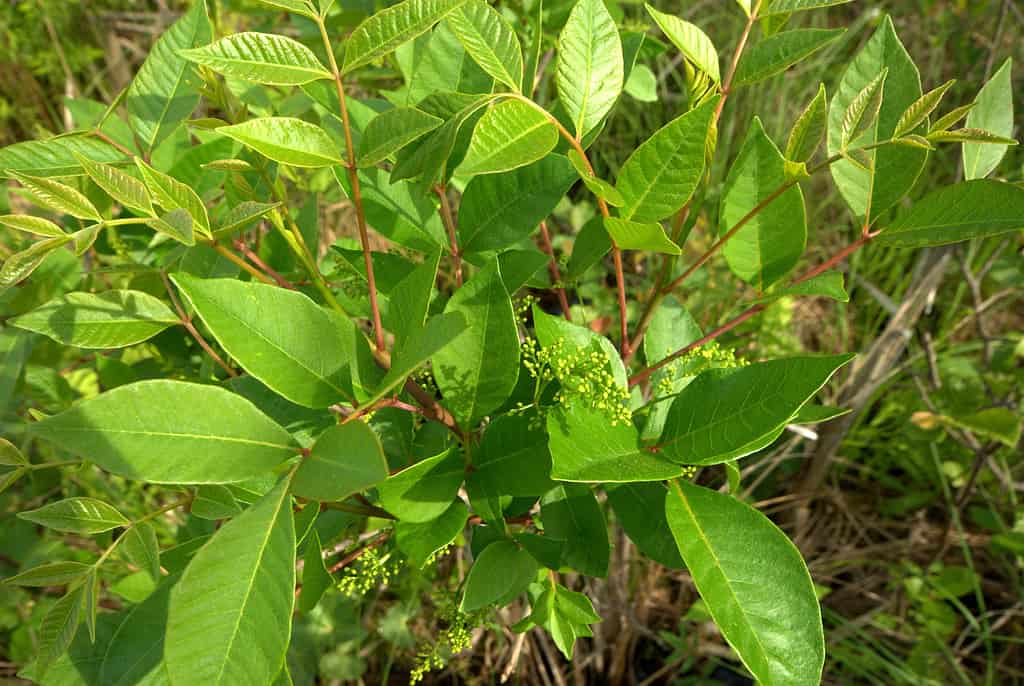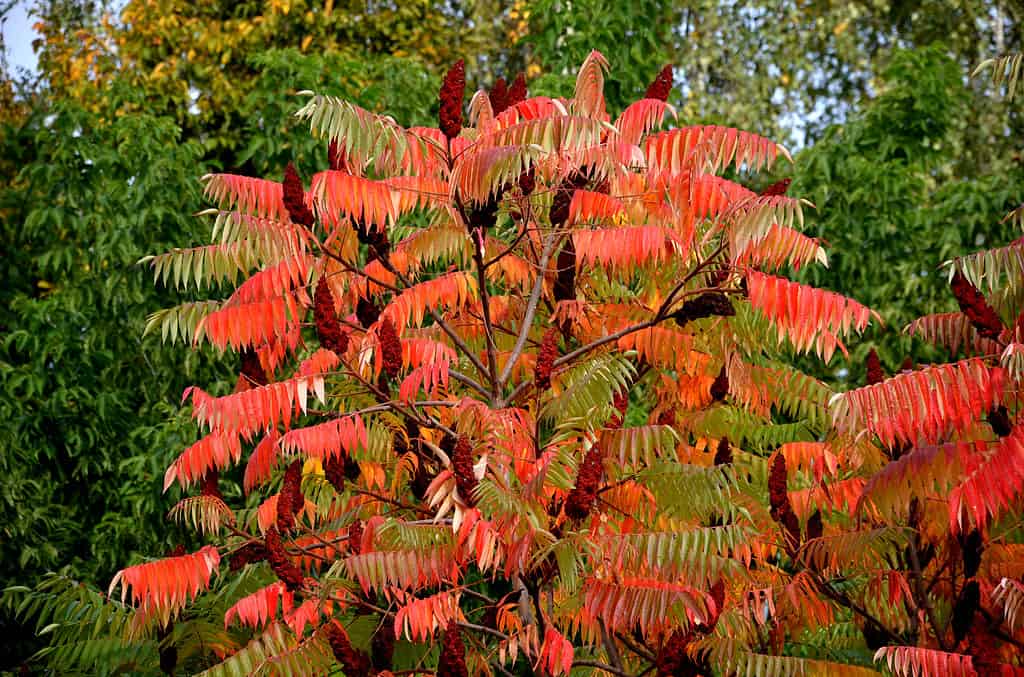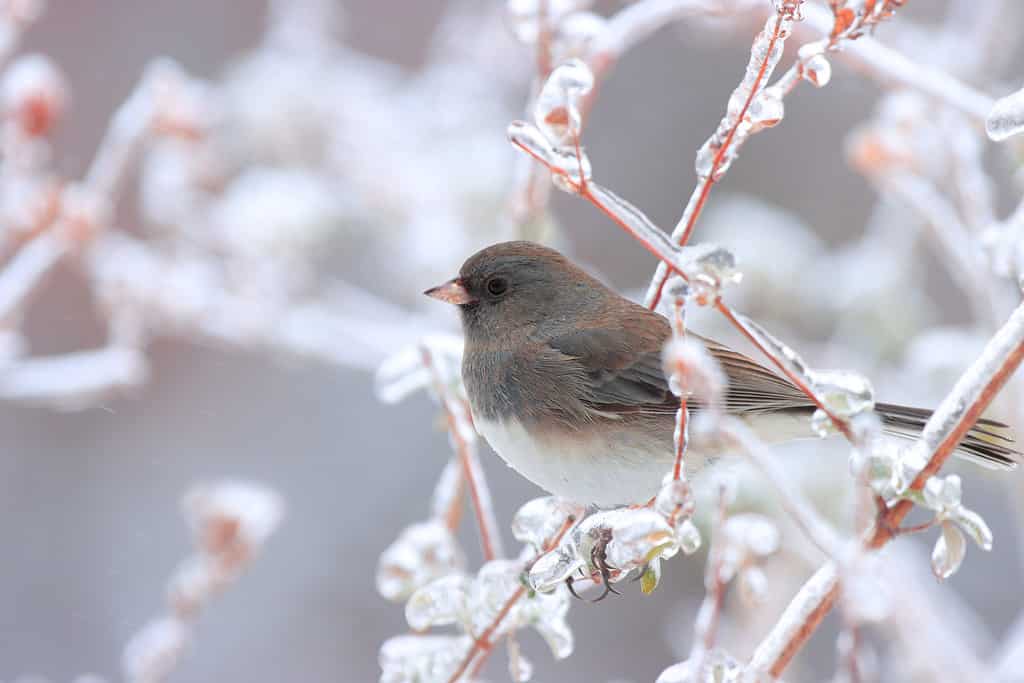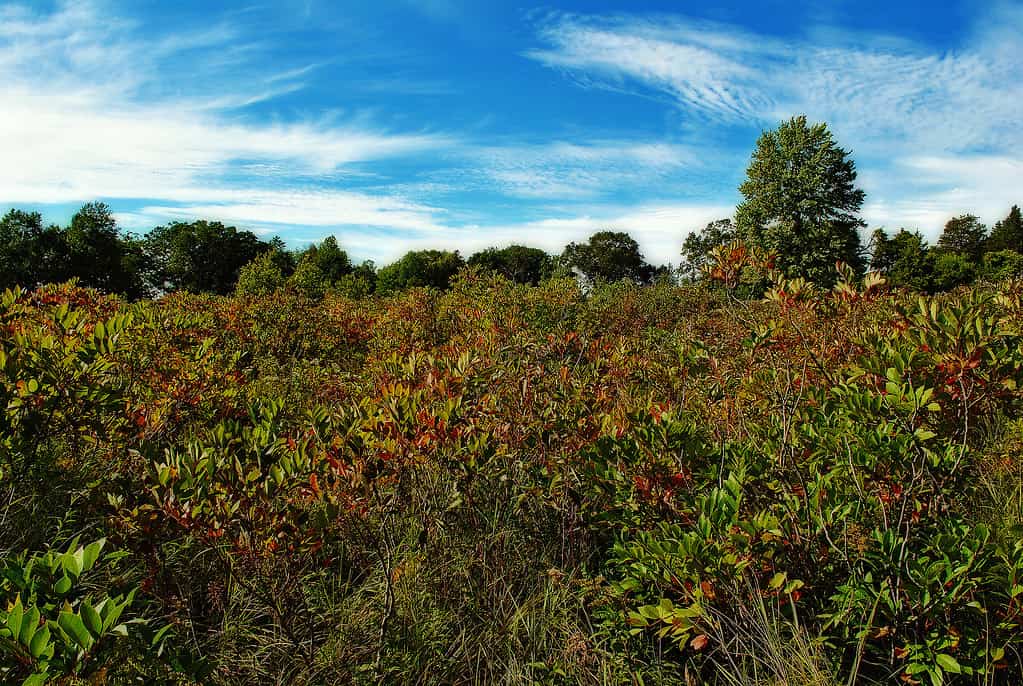Native to the eastern and central parts of the United States and Canada, poison sumac appears as far west as Texas. This plant can grow up to 20 feet tall, but its branches don’t grow larger than about six inches in diameter. Poison sumac likes acidic and moist growing conditions, so it primarily grows in wetlands, bogs, swamps, and similar areas. Pesky and dangerous, poison sumac causes no end of rashes, fevers, and lung problems for those who encounter it. All parts of the plant cause discomfort or pain for humans. Many people identify this problem plant by its distinctive leaves, but what happens to the plant in the winter? Let’s find out!
Not for Humans

Poison sumac poses a real threat to humans, but few other animals risk its adverse effects.
A key resource for many animals and insects, poison sumac’s poisonous traits only adversely affect humans. The plant’s poison compound, urushiol, only rarely affects animals. Some birds, like songbirds, ruffled grouse, bobwhites, and ring-necked pheasants, eat the fruits during the winter. Young poison sumac shrubs also serve cottontail rabbits, who eat and sharpen their teeth on the bark and twigs. Also, caterpillars of various moths eat poison sumac leaves, while small bees and flies help pollinate the flowers.
Several other types of sumac are also native to North America, but the severity of poison sumac reactions often scares people away from enjoying the other varieties. Dozens of other flowering and fruiting varieties exist within the Rhus genus in North America and the rest of the world. Until recently, poison sumac — and its relatives poison ivy and poison oak — were classified within the Rhus genus. Now, the dangerous plants have their own classification as the Toxicodendron genus.
Deciduous Leaves

All varieties of sumac, like this smooth sumac, display vibrant colors in the fall prior to the leaves dropping for winter.
©Beekeepx/Shutterstock.com
Poison sumac, or Toxicodendron vernix, is classified as a woody shrub or tree. Fun fact: poison sumac is in the same family as cashews! A deciduous perennial, this plant drops its leaves in the winter. The leaves turn a bright orange, red, or yellow in the fall prior to dropping. Other varieties of sumac are popular landscape plants specifically for their fall color. Like many deciduous plants, poison sumac enters dormancy in the winter. This state primarily serves to conserve moisture and prevent the cells of a tree and its sap from freezing. Dropping its leaves is a main component of this process. If it gets too cold and the tree’s sap freezes, the tree will explode.
Cold and Dreary

Many types of birds and other animals rely on the berries of the poison sumac to get them through the winter.
©Walter Coate/Shutterstock.com
Poison sumac spends its winters without leaves, looking spindle-y and bare. However, its white berries often still cling to its branches. These berries grow in loose clusters and attract various wildlife, regardless of the cold. Poison sumac berries offer an excellent food source during the winter when other food is hard to find. The bark and twigs also remain edible for the species that rely on them.
There’s an old myth that poison sumac is safe to handle in the winter once the plant is dormant. However, this is not good advice. The bark, sap, berries, and other parts of the poison sumac remain poisonous and dangerous to touch, even in winter. If you need to identify a poison sumac tree but aren’t sure, several testing kits exist to help through sap identification. Best to be safe than risk a rash!
Final Thoughts

Native to North America, poison sumac serves many important roles within its ecosystems.
Poison sumac may be dangerous and irritating for us, but it plays a crucial role in its ecosystem. Even in winter, it supplies food and resources to many species within its natural habitat, making eradication challenging. Though native to North America, poison sumac can grow aggressively and edge out other beneficial plant species. Some efforts to control the poison sumac populations involve replacing the plant with other plants that slow its spread while also offering similar benefits to the ecosystem.
Thank you for reading! Have some feedback for us? Contact the AZ Animals editorial team.








